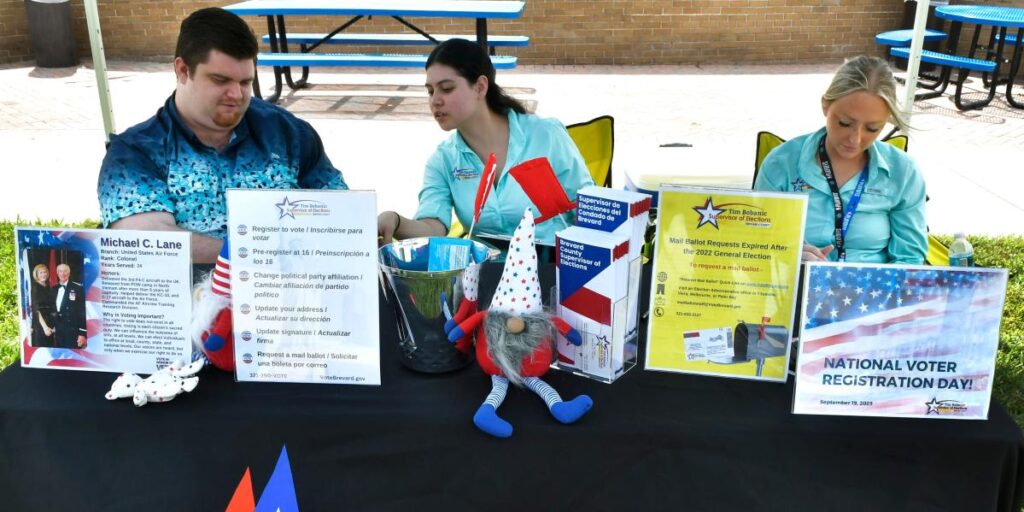As the deadline of Monday approaches for voter registration ahead of the Nov. 5 election in Florida, political parties are intensifying their efforts to engage and register eligible voters. The Florida political landscape, however, has been increasingly skewed as minority parties, be they Democrat or Republican, find themselves in a tight spot. In several counties, including Volusia County, the number of voters registered as no-party affiliated (NPA) has surpassed those registered with either of the two major parties. This trend has become a significant point of concern among local party leaders, particularly for the Democrats, who have seen a decline in their registered voter base. As of the latest count, Volusia County Democrats numbered 130,558, closely trailing behind the 130,575 NPAs.
The rising trend of young voters opting for NPA status is particularly troubling for party officials. Jewel Dickson, the chair of the Volusia County Democratic Party, expressed concern about the phenomenon, attributing it to a lack of party identification among younger citizens. Rather than trying to convert these voters to party affiliation, the Democrats are focusing on providing information that may encourage them to support Democratic candidates in elections. Both major parties are adjusting their strategies to engage NPAs by identifying potential Democratic voters among this group, particularly in neighborhoods where Democratic sentiments are prevalent.
Historically, Volusia County has been a stronghold for Democrats but lost that status in 2017 when Republicans overtook them in registered voters. This shift has only accelerated over the years, with Republicans now enjoying a significant advantage of approximately 50,000 registered voters in a county with a population exceeding 450,000. Other counties in Florida present a patchy electoral map, with some, like Flagler County, still showing a lead for Democrats over NPAs, while others demonstrate a clear preference for nonpartisan registration. Notably, 18 of Florida’s 67 counties had more registered NPAs than members of either major party by the time registration closed for the 2024 primary.
The increase in NPA registrations is occurring across various regions in Florida, including several traditionally Republican-dominated counties in the northwest Panhandle and Northeast Florida, as well as Democratic strongholds like Miami-Dade and Broward counties. Political scientists have pointed out that the convenience of voter registration reforms has contributed to the rise in non-affiliated voters, which may reflect a generational shift away from traditional party identification. However, experts caution that while NPA figures have grown, voting turnout among these registrants may not keep pace.
Lonna Atkeson, a political science expert at Florida State University, suggests that the increasing prevalence of NPAs might stem from individuals wanting to conceal their actual political affiliations in areas dominated by one party. This is especially true for those who may have business dealings with the local government or who work in environments where party allegiance could jeopardize their standing. Moreover, younger voters, especially those from immigrant families, tend to be more likely to identify as nonpartisan, further complicating the electoral landscape.
As people relocate to Florida from traditionally Democratic states, some are changing their voter registration to NPA or even Republican to align with their new environment. Dickson acknowledges that the shift to NPA status may not be indicative of established Democrats abandoning their party but could represent newcomers adjusting their political identity. Despite challenges posed by the growing NPA demographic, she expresses a willingness to engage with nonpartisan voters and emphasizes that her efforts are aimed at reaching those who might not lean toward the far right or “MAGA” movement. This evolving political landscape raises crucial questions for both parties as they strategize for upcoming elections, navigating the complexities of voter identity and affiliation in contemporary Florida.

